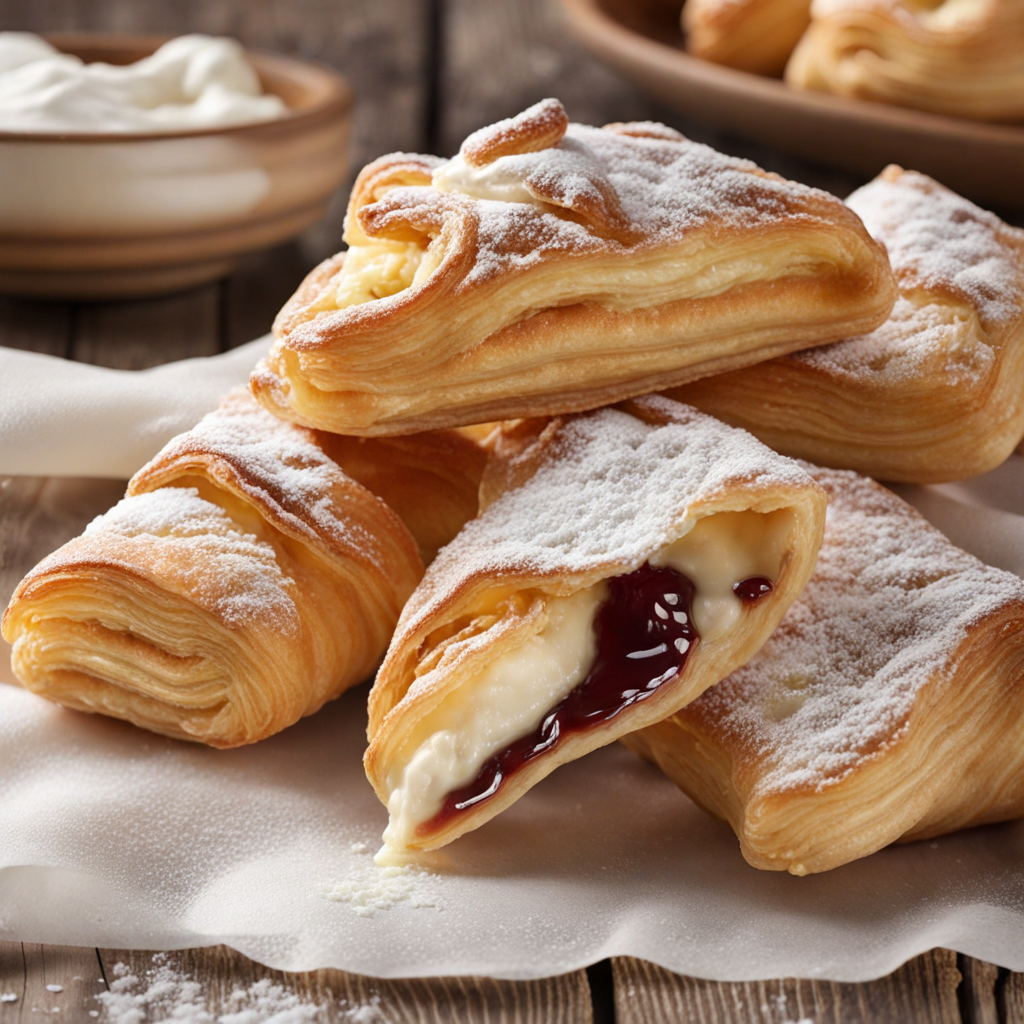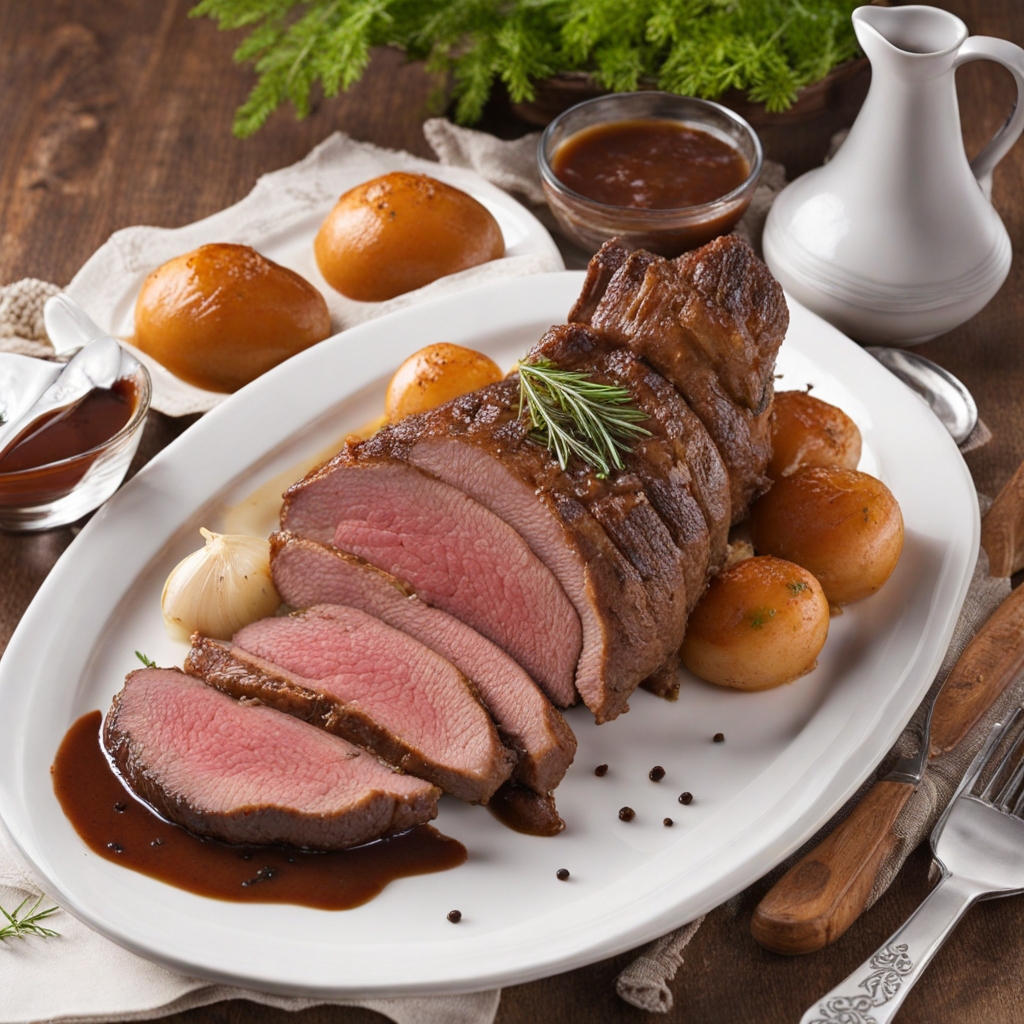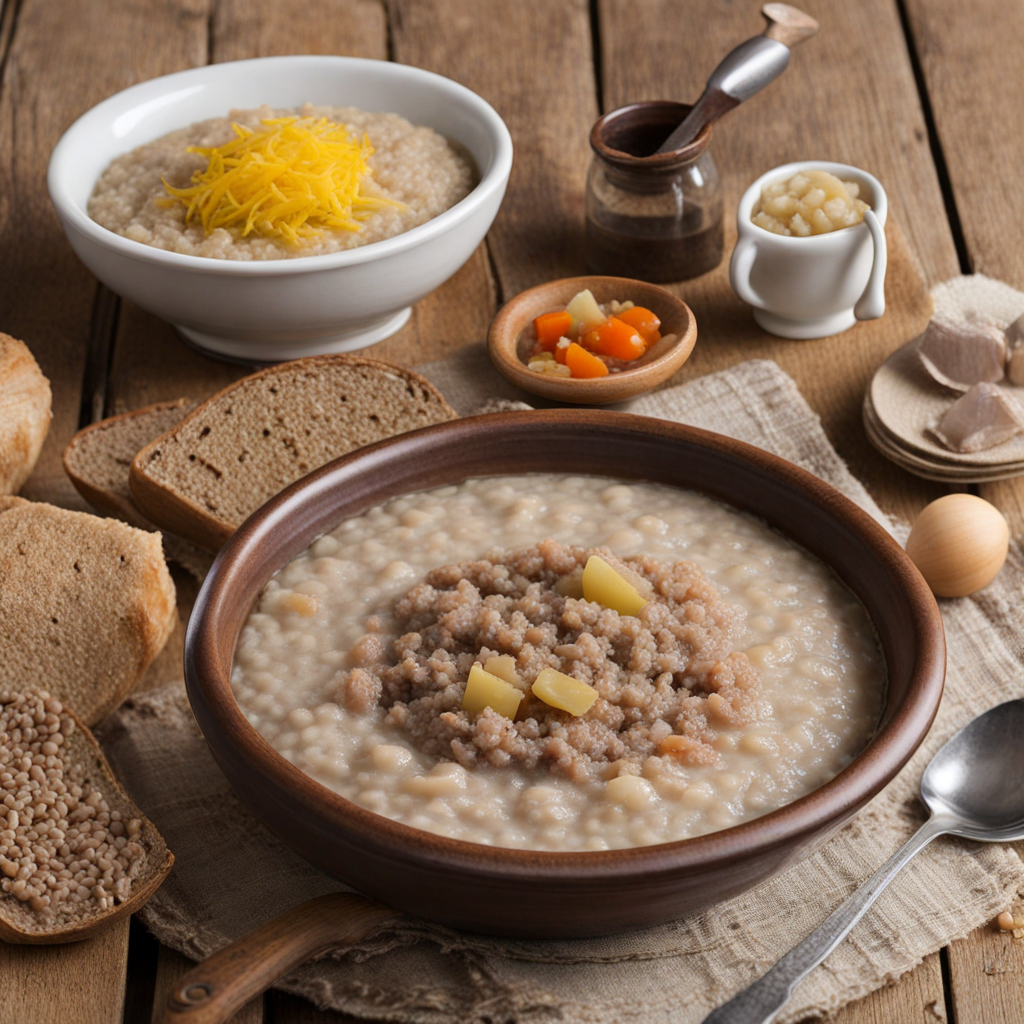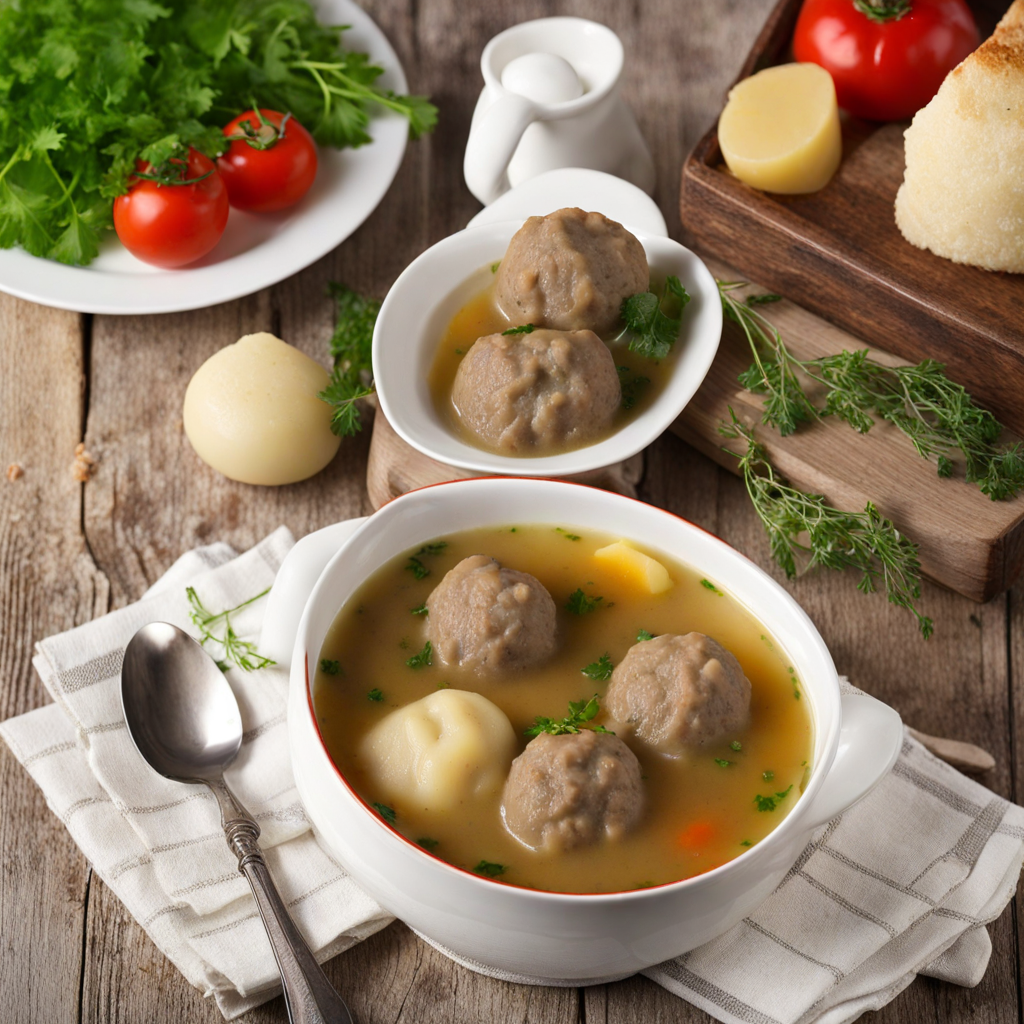Topfengolatsche
Topfengolatsche is a delightful pastry originating from Austria, often celebrated for its rich flavor and unique texture. This traditional sweet treat is a type of cheese pastry, specifically made with quark, a fresh dairy product similar to cottage cheese but smoother and creamier. The name "Topfengolatsche" derives from "Topfen," the Austrian term for quark, and "Golatsche," which refers to a filled pastry. This dish encapsulates the essence of Austrian baking, showcasing both simplicity and indulgence. The history of Topfengolatsche is deeply intertwined with Austrian culinary traditions. Quark has been a staple ingredient in Central European cooking for centuries, often used in various dishes ranging from savory to sweet. The pastry itself is believed to have roots in the rural regions of Austria, where dairy farming was prevalent. As a result, Topfengolatsche emerged as a way to utilize fresh quark, combining it with flour and other ingredients to create a comforting pastry that could be enjoyed by families as a snack or dessert. Over the years, this dish has been adapted and embraced in various forms, but its essence remains true to its origins. The flavor profile of Topfengolatsche is a harmonious blend of mild sweetness and creamy richness. The quark filling is light and slightly tangy, which balances perfectly with the sweetness of added sugar and vanilla. The pastry itself is soft and tender, with a hint of buttery richness that complements the filling. Some variations may
How It Became This Dish
The Rich History of Topfengolatsche: Austria's Creamy Delight Topfengolatsche, a beloved pastry from Austria, is a testament to the country’s rich culinary heritage. This delightful treat, a sweet pastry filled with a creamy quark cheese mixture, has not only tantalized taste buds but also woven itself into the fabric of Austrian culture. To understand the significance of Topfengolatsche, we must delve into its origins, cultural importance, and evolution through the centuries. #### Origins: The Birth of a Pastry The roots of Topfengolatsche can be traced back to the influence of various European culinary traditions, particularly in Central Europe, where dairy farming and cheese production played crucial roles. The term "Topfen" refers to quark, a fresh, soft cheese that is common in Austria and other German-speaking countries. Quark itself has ancient origins, dating back to the time when people first began to domesticate animals and utilize their milk. Quark’s versatility made it a staple in many traditional dishes, including pastries. The earliest records of quark being used in baked goods date back to the Middle Ages. As trade routes expanded and cultural exchanges flourished, recipes began to spread and evolve. The introduction of sugar and the refinement of baking techniques during the Renaissance period allowed for the creation of more sophisticated pastries, including those filled with sweet cheese. By the 19th century, the Topfengolatsche emerged as a distinct pastry in Austria. It became a popular treat among the Viennese bourgeoisie and soon found its way into bakeries across the country. The pastry's combination of flaky dough and creamy filling appealed to many, solidifying its status in Austrian cuisine. #### Cultural Significance: A Pastry of Celebration Topfengolatsche is more than just a pastry; it is woven into the cultural tapestry of Austria, often enjoyed during celebrations, festive occasions, and family gatherings. In Austria, food is a central aspect of social life, and Topfengolatsche holds a special place in this tradition. The pastry is often served at weddings, birthdays, and holidays, symbolizing abundance and joy. Its creamy filling is reminiscent of the richness of life, while its flaky crust represents the sweetness of shared moments. Families often pass down recipes through generations, ensuring that the art of making Topfengolatsche remains alive. In addition to its role in celebratory events, Topfengolatsche has also found its place in the everyday lives of Austrians. Bakeries often feature it prominently, and many locals enjoy it with their afternoon coffee. This daily ritual of enjoying pastries with a warm beverage fosters community and connection, further solidifying Topfengolatsche’s significance in Austrian culture. #### Development Over Time: A Culinary Evolution As with many traditional foods, the preparation and presentation of Topfengolatsche have evolved over time. Initially, the pastry was made with simple ingredients: flour, butter, sugar, and quark. However, with the advent of globalization and an increase in culinary experimentation, variations began to emerge. In the early 20th century, as Austria became more cosmopolitan, bakers began to experiment with different fillings. While the classic quark filling remains the most popular, variations with fruits, such as apricots, cherries, and blueberries, have gained traction. These adaptations reflect the changing tastes of society and the availability of seasonal produce. The dough itself has also seen variations; some bakers opt for a yeast-based dough, while others prefer a rich, buttery dough similar to that of croissants. This flexibility allows for a range of textures and flavors, catering to diverse palates. Moreover, the rise of health consciousness in the late 20th and early 21st centuries prompted some bakers to experiment with healthier versions of Topfengolatsche. Substitutions of whole wheat flour, reduced sugar, or the incorporation of natural sweeteners have emerged, appealing to a new generation of health-conscious individuals. Despite these modern adaptations, traditional recipes remain cherished. Many families still follow age-old methods, believing that the essence of Topfengolatsche lies in its simplicity and authenticity. This balance between tradition and innovation illustrates the dynamic nature of culinary practices in Austria. #### The Global Reach of Topfengolatsche In recent years, the globalization of food culture has contributed to the rising popularity of Topfengolatsche beyond Austrian borders. Austrian expatriates and culinary enthusiasts have introduced this pastry to international audiences, showcasing its unique flavors and textures. Food blogs, cookbooks, and social media have played significant roles in this culinary outreach. Recipes and images of Topfengolatsche have circulated widely, allowing people from different backgrounds to appreciate and try their hand at making this delightful pastry. Moreover, the growth of Austrian cuisine in the global culinary scene has given rise to Austrian-themed restaurants and bakeries that feature Topfengolatsche on their menus. As a result, it has become a symbol of Austrian hospitality and culinary excellence, enticing those who may not be familiar with its origins. #### Conclusion: A Culinary Treasure Topfengolatsche is more than just a pastry; it is a reflection of Austria’s cultural heritage, a symbol of celebration, and a testament to the evolution of culinary practices. Its origins in the simple use of quark cheese speak to the resourcefulness of past generations, while its development over time showcases the adaptability of traditional foods in a rapidly changing world. As Topfengolatsche continues to delight new generations of pastry lovers, it remains a cherished part of Austrian culture—one that bridges the past and the present, unites communities, and celebrates the simple joys of life. Whether enjoyed at a festive gathering, a casual afternoon coffee, or as a culinary curiosity abroad, Topfengolatsche stands as a delicious reminder of Austria's rich gastronomic legacy.
You may like
Discover local flavors from Austria







